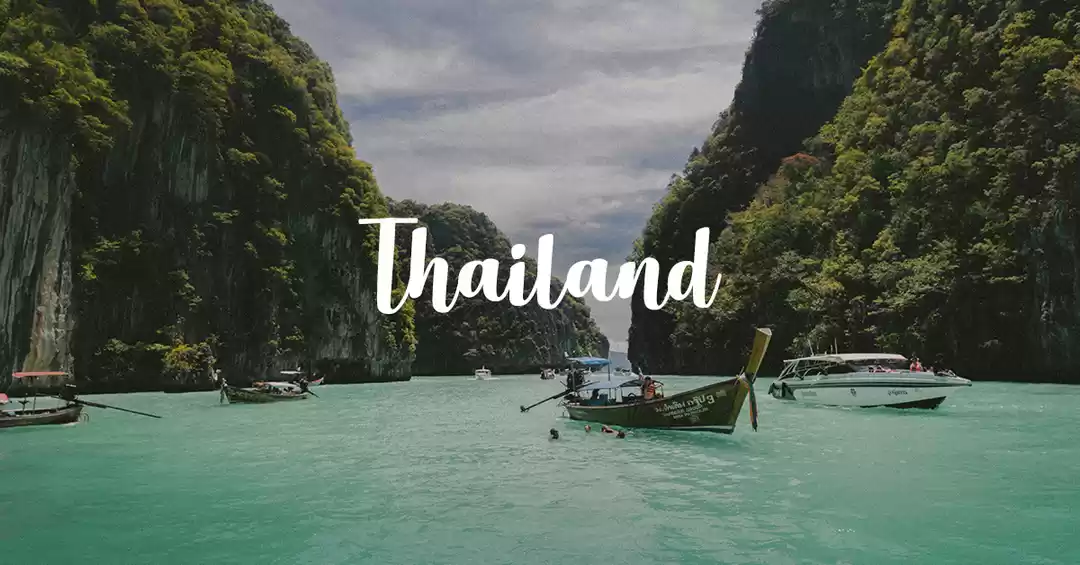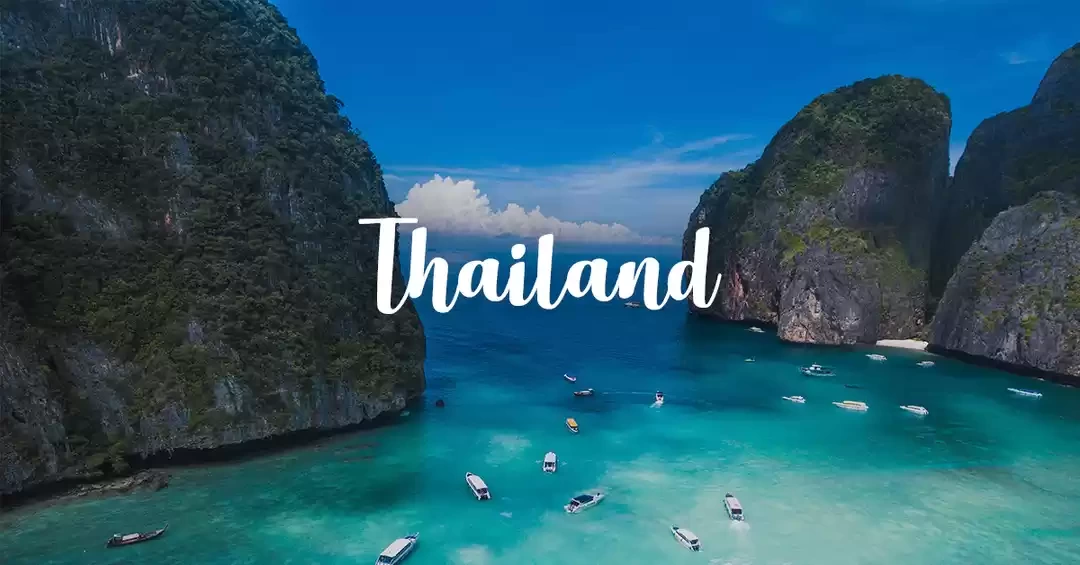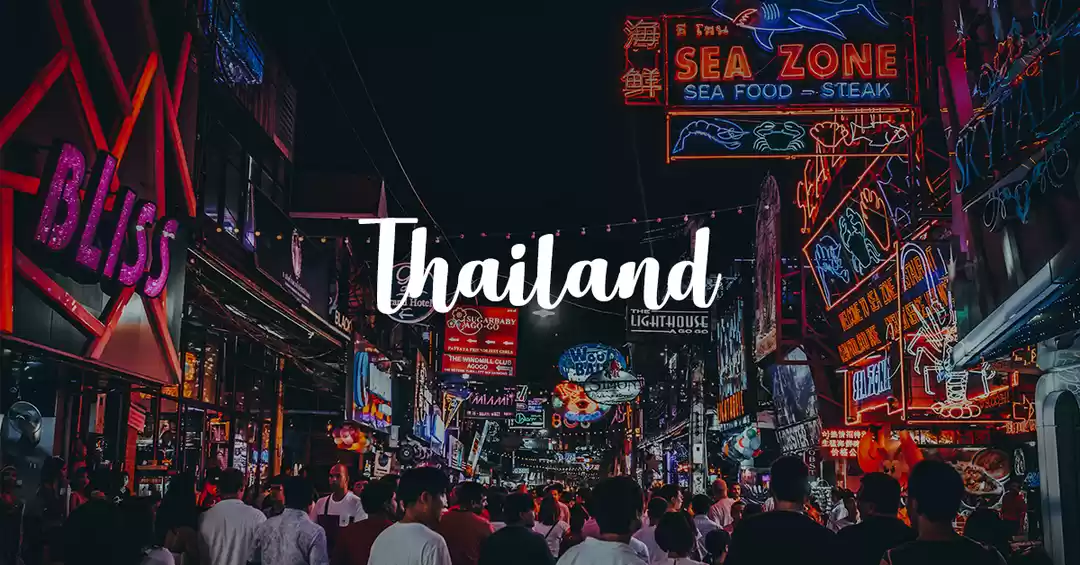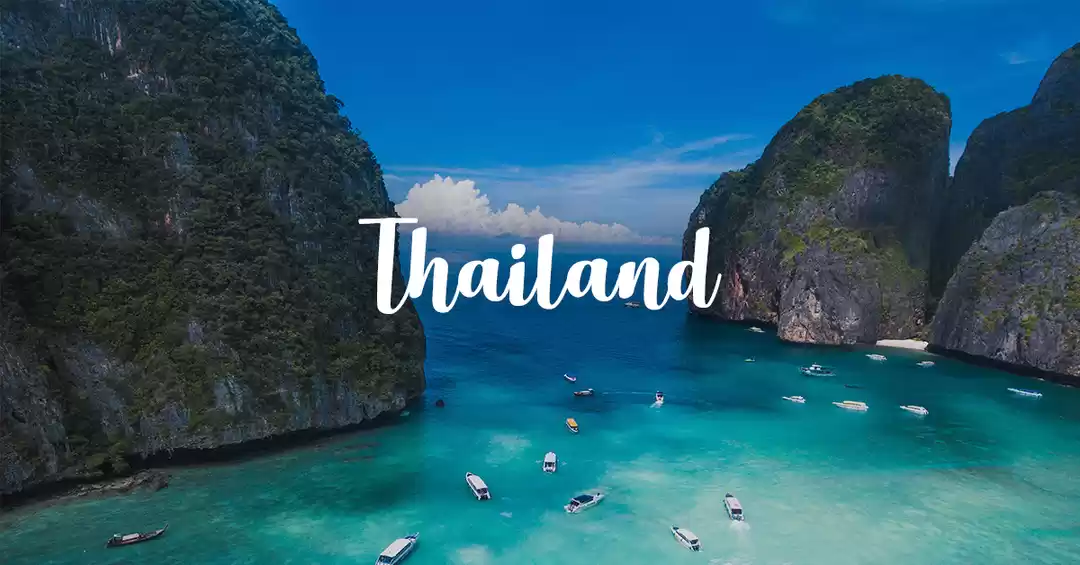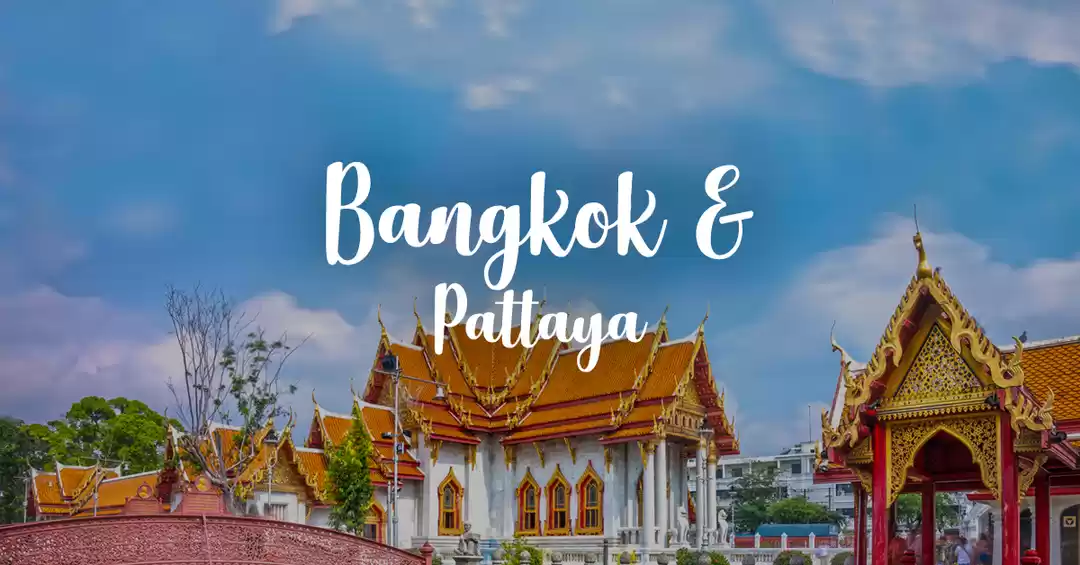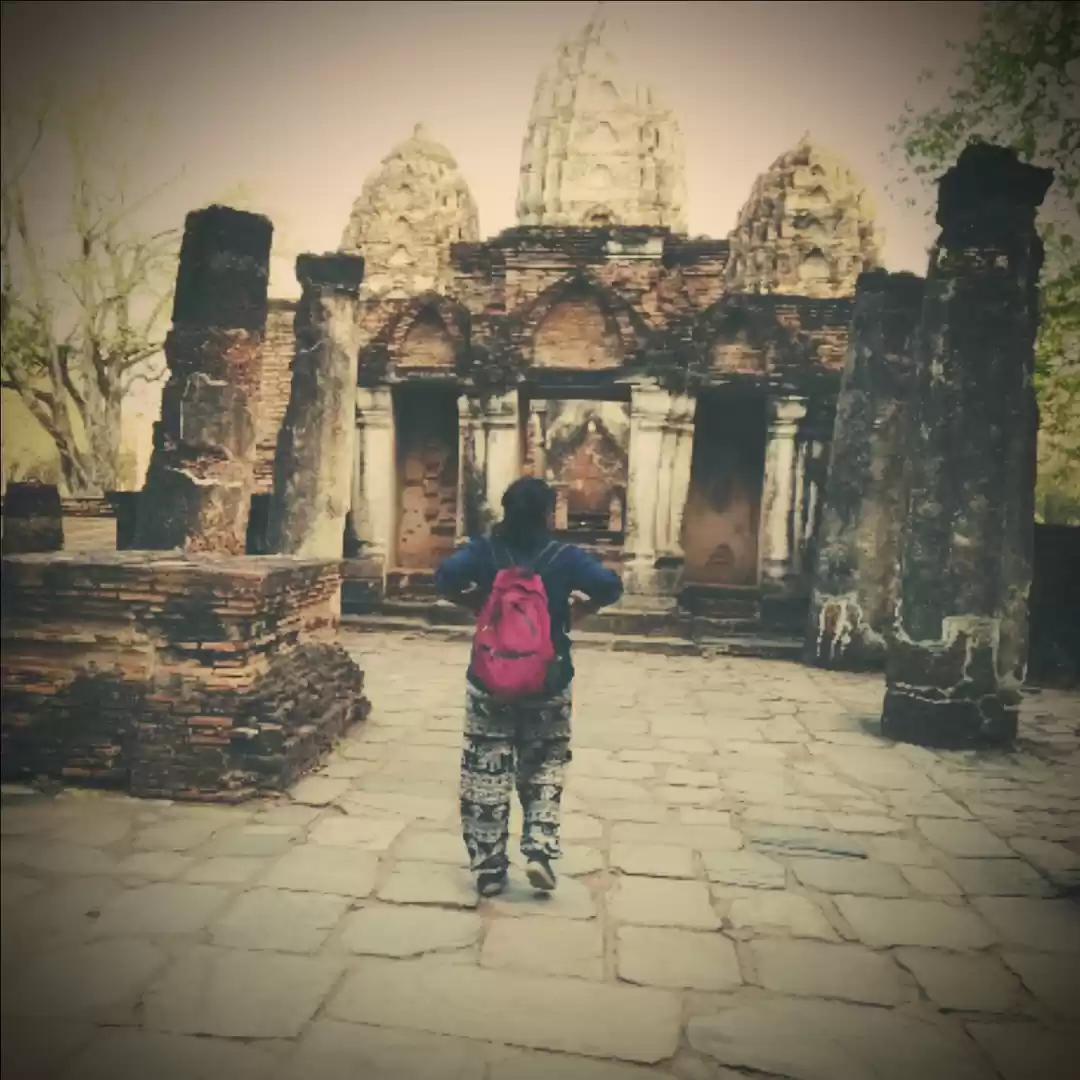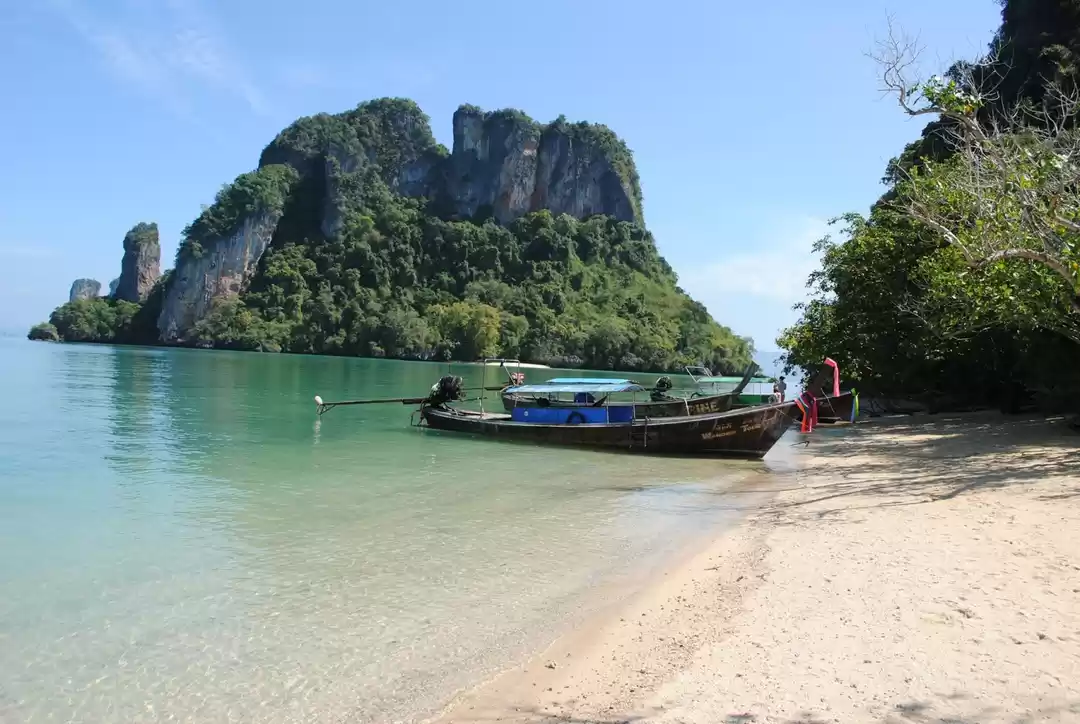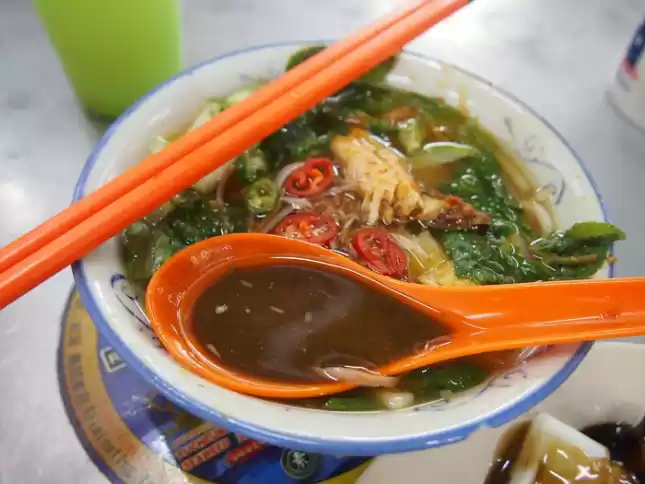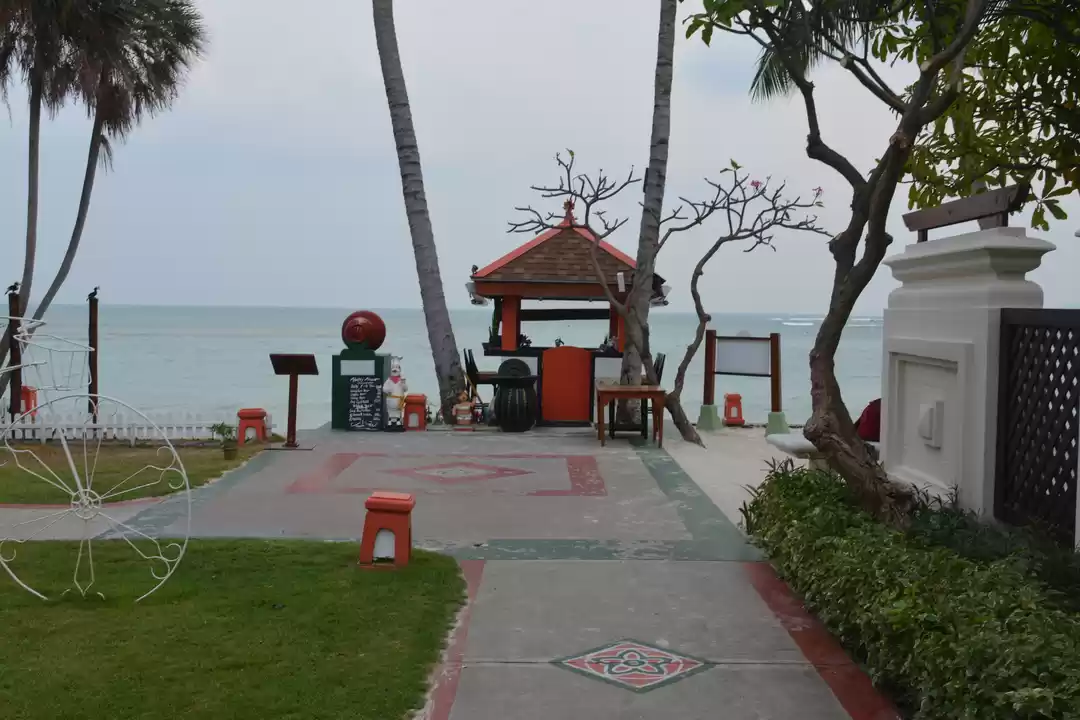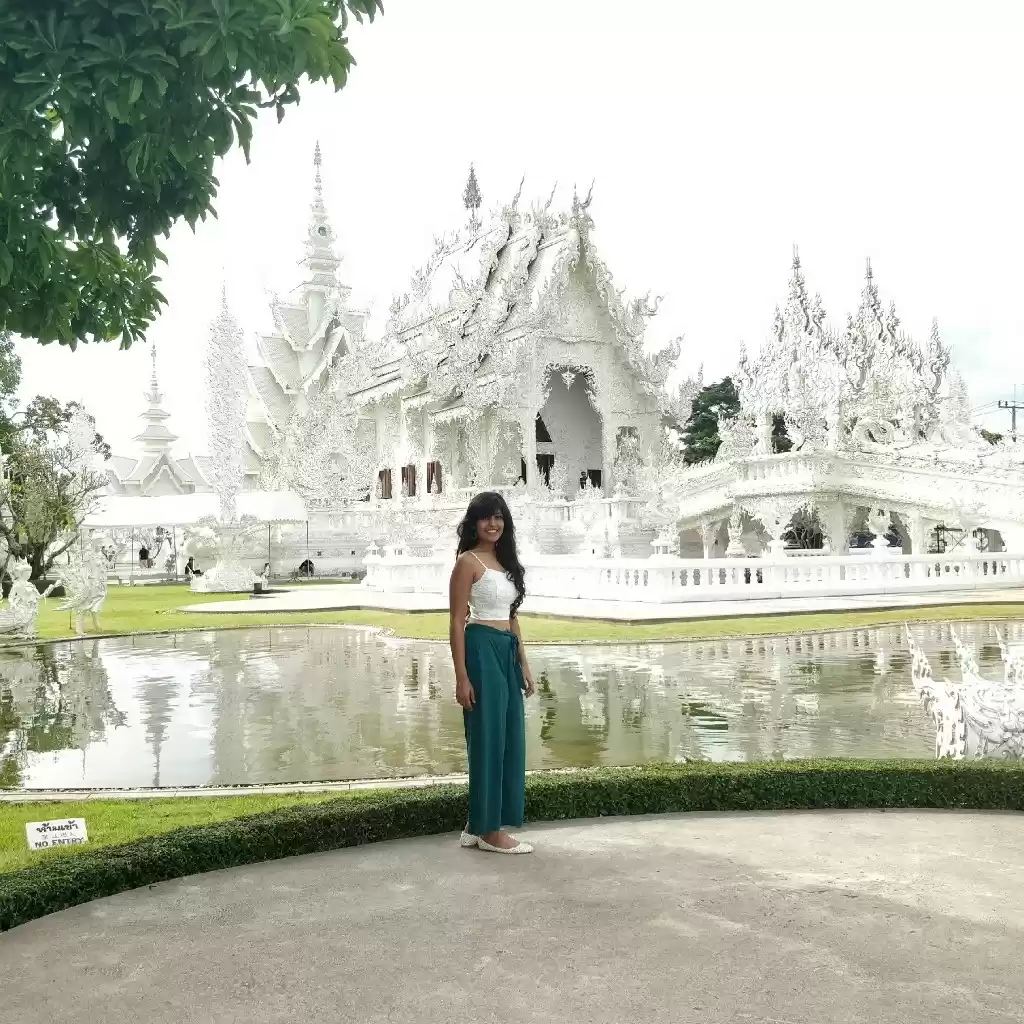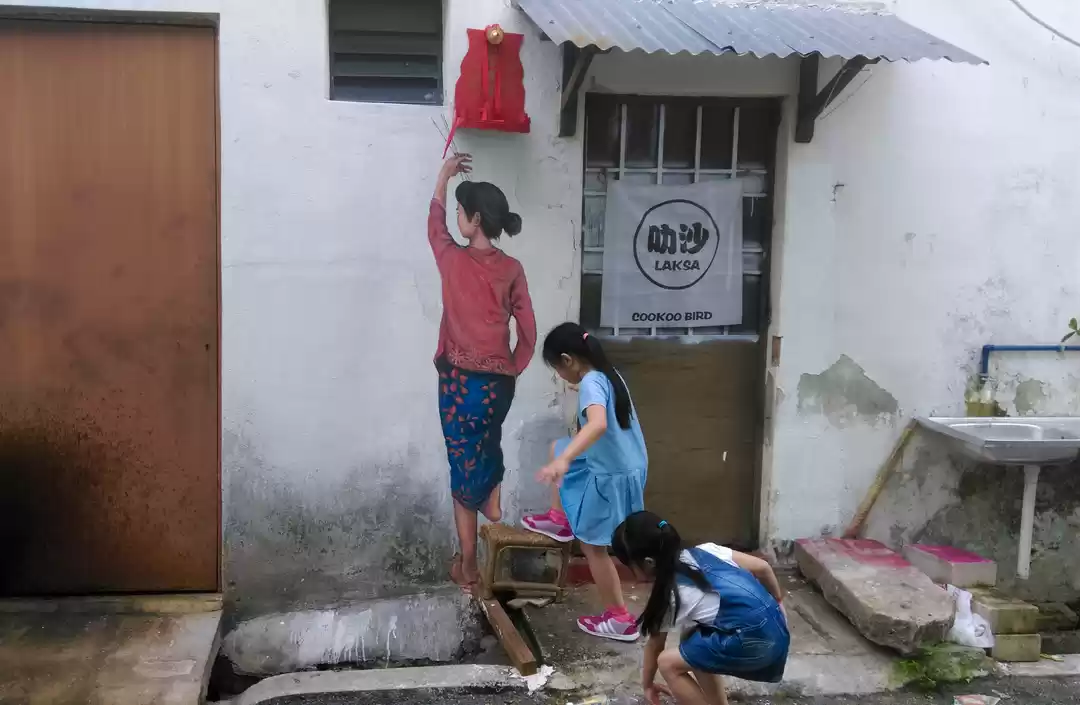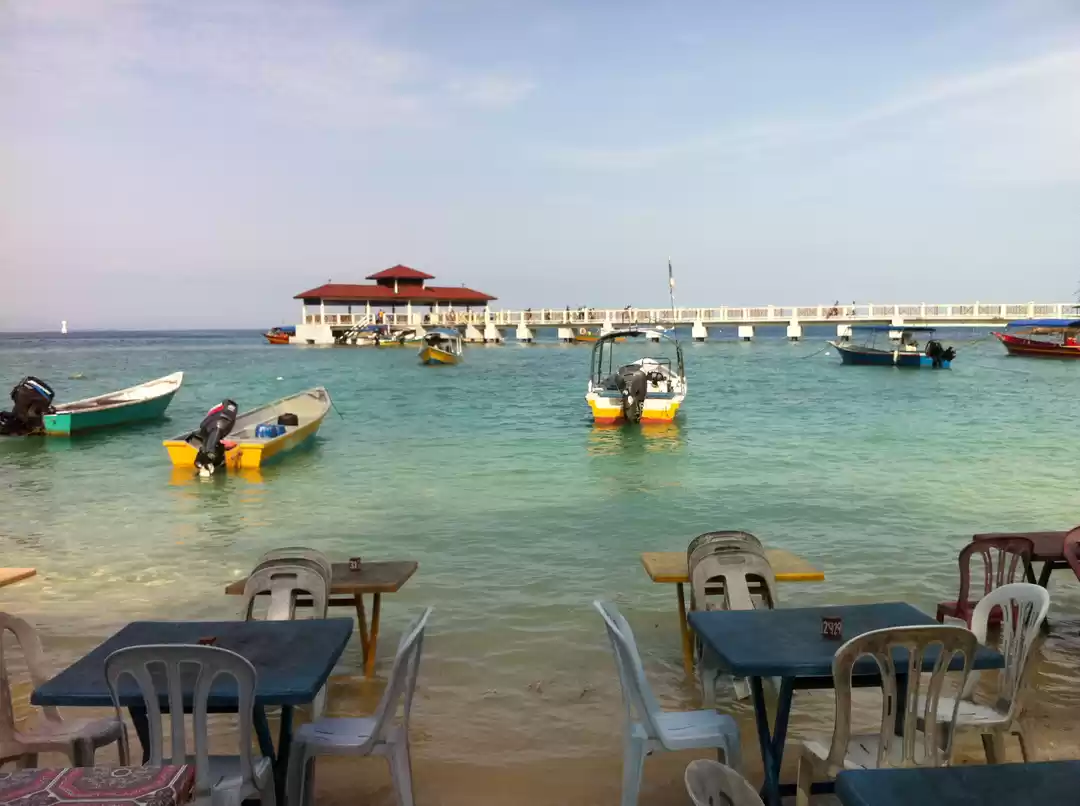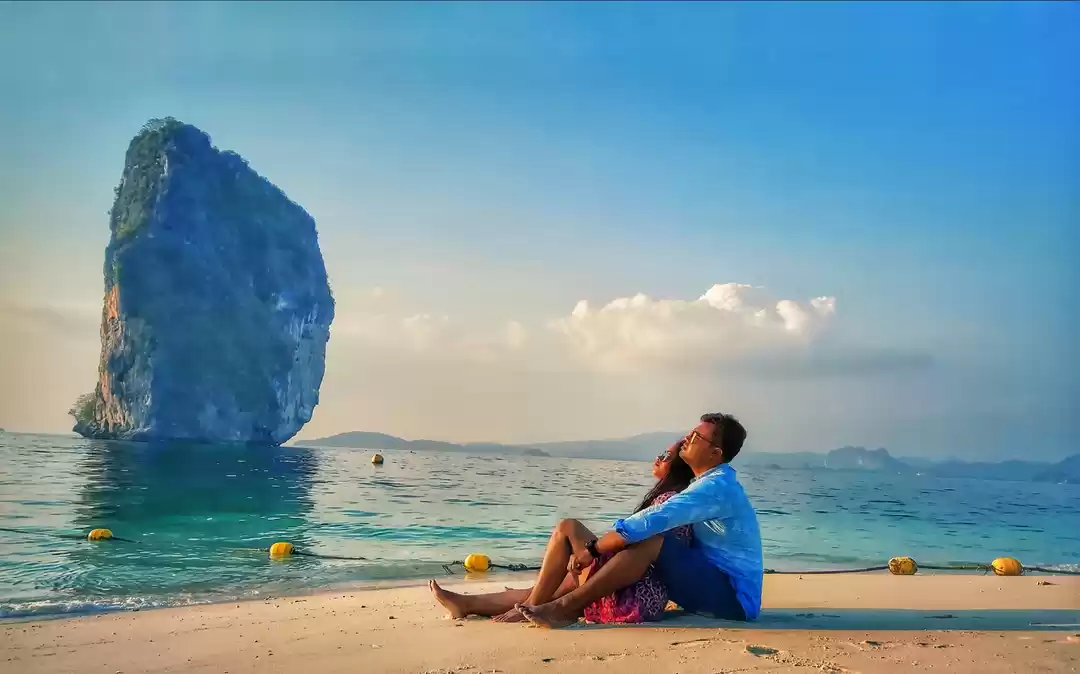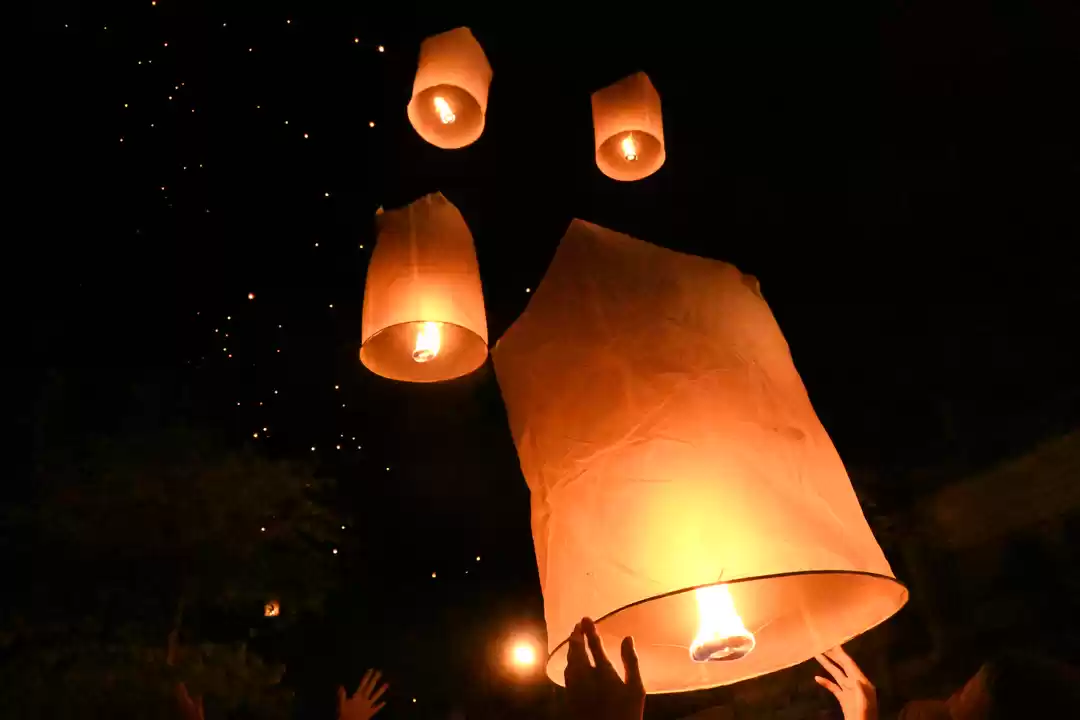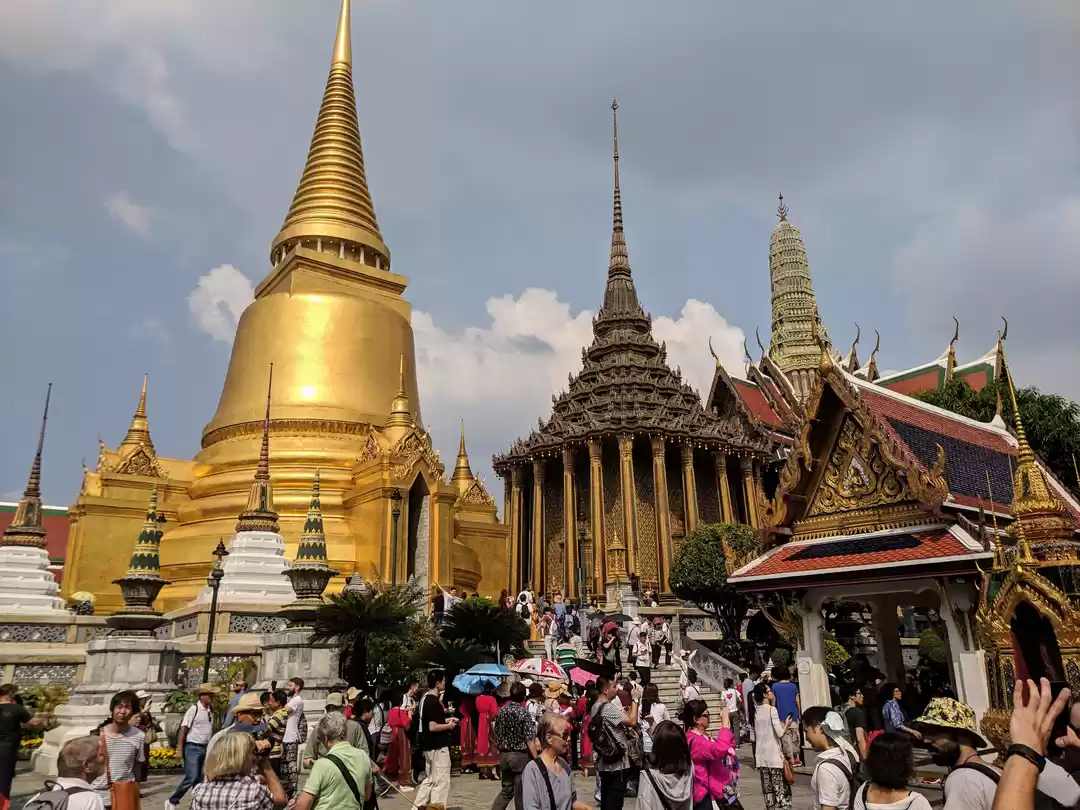
South-East Asia has been on our radar from a long time, but this August we finally set on to one of the best journey of our life. It was really a hard decision to drop Vietnam of this list, but that was all we were able to skew in two weeks. The idea was to see both the sides, bustling urban cities to secluded countryside, of these two beautiful countries tucked between the Andaman Sea at one side and the Gulf of Thailand and South China sea at the other. We decided to travel over land as much as possible and avoid flights once we enter either of the countries. After numerous rounds of permutations, the final itinerary we agreed upon was to fly to Bangkok (3 nights), take a night train (and bus) to reach Krabi (3 nights), travel over land (bus, train and ferry) to reach Penang/George Town (2 nights) in Malaysia, take a bus (and ferry) to Perhenthian Islands (2 nights), take a bus to reach Kuala Lumpur (3 nights) and then fly out of there.
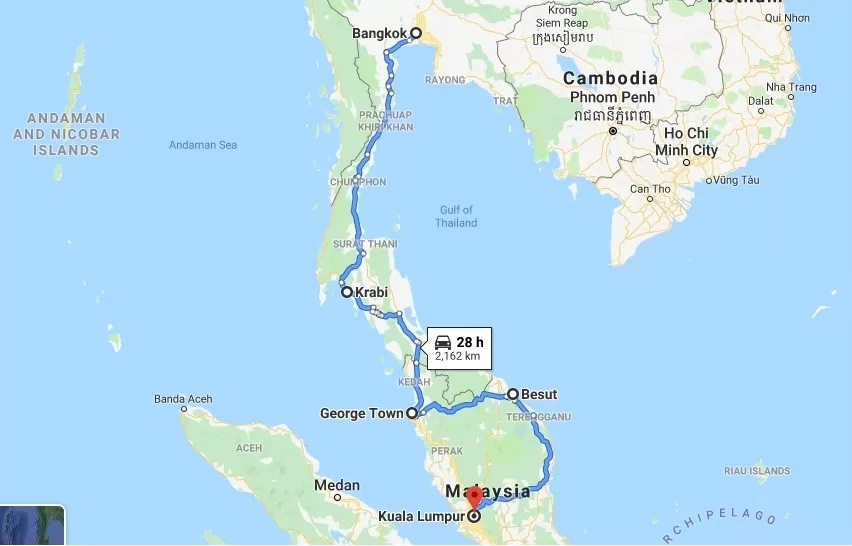
To my surprise, visa was the most difficult thing to get here. After booking flights, stay and train/buses etc. I was kind of relaxed as both Thailand and Malaysia have visa on arrival (VoA) or e-Visa facility for Indian passport holders. The catch is that, you need a confirmed flight ticket out of Thailand if you want to get either e-visa or VoA. Since our plan was to exit Thailand via land (the train between Hatyai in Thailand and Padang Besar in Malaysia), we had to get sticker visa for Thailand on our passports and for that we had to give an undertaking explaining what our plan is and why we do not possess confirmed flight tickets out of Thailand. You have to manually visit the application centre (or get it done through a travel agent if that suits you) to do so, and that is why I said "most difficult", as everything else was electronically booked. If you plan to exit Thailand (or any other country for that matter) over land, please be very careful about the eligibility requirements for e-visa and VoA. Malaysia, comparatively, was a cake walk. They have an eNTRI facility (applied and issued online) which allows you 15 days of stay and e-visa for a longer stay as a tourist.
For a quick reference, here is a rough cost breakup:
Flights tickets = approx. INR 32,ooo return for two.
Thailand Visa fee = INR 5600 for two (including visa and service fee).
Malaysia Visa fee = USD 40 for two (approx. INR 3000).
Stay = approx. INR 25,000 (for the whole travel).
Intercity Travel (1 train journey in Thailand and 2 bus journeys in Malaysia) = approx INR 5000.
Food, Drinks, Local travel (taxi, bus, metro, ferry etc.) and activities (entrance fee, SCUBA diving etc.) = approx. INR 50,000.
(INR = Indian Rupee, THB = Thai Baht, RM = Malaysian Ringgit)
Day 1: We landed at Bangkok in the morning, picked sim card (you can book online and pick at the airport) and took the Airport Rail Link to get to the city. After catching up on some sleep, we headed to the Chatuchak weekend Market, and that gave us a glimpse of what was ahead over the next 3 days. It was bustling, packed, extensive, but yet colorful, organised and cheerful. Do not miss out the famous coconut ice cream and sticky rice-mango besides food. It is also the best place to pick souvenirs as well, we found the prices here better than other markets in Bangkok.
Note: The BTS (skytrain) and MRT services are quite good and easy to navigate in Bangkok and so is the bus service. However, if you are two or more than two people, sometimes Grab may work out cheaper. So, to save a few bucks, do run a quick check of the route and approximate cost both by metro (BTS/MRT) and taxi (Grab). Also, no offence to google maps (it is an incredible friend) but do not rely on google maps all the time. If you have a doubt, do cross check with the locals, and they will be more than happy to help you out.
And about food, it seems like the whole of Bangkok loves street food. Food markets, night markets or road-side kiosks serve really delicious food and since a lot of people are working, they pick their quick meals from there. Some of the kiosks do have items on display, so it is best to pick what looks good to you. We found street food to be safe and really cost-effective, though options for vegetarians (if you by chance are) are limited.
Day 2: The usual hop from Bangkok is Pattaya. At the planning stage itself, we had ditched Pattaya, and decided that we will visit the Death Railway, whose origin goes back to the World War II when the Japanese used 60,000 POWs from various Allied countries and 250,000 labourers from South East Asian countries to build the railway connecting Thailand and the then Burma (which was a Biritish colony and occupied by Japanese in 1942) to support its forces avoiding the risky sea route through Strait of Malacca and the Andaman sea. This included construction of a bridge at Kanchanaburi and via duct along the river. The famous Hollywood movie The Bridge on the River Kwai derives the plot from this. Around 100,000 people died during the construction of the railway, thus known as Death Railway.
Although it is better to do this over 2 or 3 days, but it is doable in one day. With more time on hand, you can visit the Hellfire pass. We took a morning (7:45 AM) train from Thonburi station in Bangkok which goes till Nam Tok and returns after a little break. There is a day excursion train from Hua Lamphong railway station on weekends at 06:30 Am, and it needs to be booked in advance at the station. (You can check out the details on the official website of Thai Railway: www.thairailwayticket.com.)
This train journey is a dive both into the history and Thai way of living as it cuts across beautiful landscapes and countryside. Hawkers, mostly women, keep ferrying through the coaches selling food and drinks. It was really fascinating to find a 70 year old lady earning her living so respectfully and passionately. The train is back at Thonburi by 7 PM.
Yaowarat Road night market was our stopover for dinner, and it is a crazy world out there. The options of Chinese and Thai food (esp. sea food) will really drive you nuts.
Day 3: Half of the day 3 was spent in the labyrinths of Bangkokian markets (not the shopping malls). These markets (Prathunam to be specific) are just crazy and you need to be equally crazy to go in there and get out with bags full of clothes. In the evening we headed out to this famous night market known as Ratchada Train Market. Again, another crazy world out here with buzzing pubs and neatly laid down kiosks of food and souvenirs and clothes and bags and fashion accessories and what not.
Day 4: Being our last day in Bangkok, we headed out to visit the incredibly beautiful temples of Bangkok. They are equally majestic inside as they are from outside. Since they all are in close proximity, it should not take long to cover probably all of them (Wat Arun, Wat Phra Kaew, Wat Pho). Do check out their timings, entrance fee (all of them have it), and dress code. We were left with a couple of hours at hand, so we skimmed through one of the shopping malls before we picked our luggage and went straight to Hua Lamphong for the next leg of our journey.
Bangkok to Krabi: We took the train at 6.30 PM which dropped us at Surat Thani at 6.35 AM the next morning. Since there is no train connectivity to Krabi, the nearest train station is Surat Thani. It also serves as connecting point for Phuket and numerous other islands, so a lot of people got down here. Krabi is another 2 hours drive from Surat Thani. Either you can book your onward bus journey in advance or just get down and ask the travel agencies right outside the train station who have scheduled buses to Krabi town. Another way is to take a local bus and go to Surat Thani town, from where you have regular bus/shared van service to Krabi town.
Train ticket from Bangkok to Surat Thani = INR 3300 for two.
Bus ticket from Surat Thani to Krabi = approx. THB 500 for two.
Note: We had booked our train tickets around a month in advance as we learnt that sleeper coaches get booked early because seats are limited. Tickets can be booked easily on the official website of Thai Railway. I found the ticket prices to be higher on third party websites (20 to 30 percent costly), and therefore I would advise that tickets are booked directly from the Thai Railway website. AC slipper (the one we booked) was really comfortable, and the bedding/linen was quite clean. Also, the ticket prices for bus from Surat Thani to Krabi were on the higher side on third-party websites, as compared to the price we paid directly to the travel agency at Surat Thani.
Day 5: Ao Nang and Railay are little away from Krabi Town, so you may either have to take a Grab or hop on to the shared taxis which costs around THB 50 person. Railay, where we had booked our stay for one day, has no road connectivity. To get to Railay, you need to take a boat (THB 100 one way per head) either from Ao Nang or Ao Nammao pier. By the time we reached our place, it was noon already. A few hours of catching up on sleep and we were at Railay beach to witness this beautiful sun set. This was the first time we witnessed sun setting in the Andaman sea, because from India you can only witness the sun setting in the Arabian sea.
Day 6: An early morning visit to the Railay beach was something we were yearning to do. There was not a single soul on the beach at 7 AM, completely secluded - probably the best start to your day. Next two days of stay were booked near Ao Nang, so by noon we left Railay and got to our place at Ao Nang. Now here you see a stark difference between Railay and Ao Nang. Here it was much more crowded and felt more like a tourist place. Besides, you have a bustling market at Ao Nang with travel agencies, currency exchange, clothes, souvenirs and eateries lined up. By the evening, we picked a scooter (costs around THB 250 for a day excluding fuel) and rode down to Krabi town to get the flavor of a small Thai (non-touristy) town and grab dinner at the night market.
Day 7: At Krabi you have numerous places to go to - both on the land as well as in the sea. It took us half an hour of ride to get to the Tiger Cave Temple (Wat Tham Suea) just outside Krabi town. I wish we had time to hike up the hill (takes about an hour to go up), but we had booked this island sunset tour. If you are a water lover, you will like these kind of tours available in plenty around Krabi, which also include snorkeling and diving. Unfortunately, rain disrupted our sunset tour. It was windy and the sea was rough. So, it is advisable to check out weather forecast before booking your island tours. Despite a partial wash-out, it was fun, especially having your dinner on the boat parked next to one of those mesmerizing limestone cliffs. Wrapping up our Thai sojourn with a stroll at Ao Nang, now it was time to go to Malaysia.
Day 8 (Krabi to Penang/George Town): An early morning (7 AM) van pickup (THB 400 per head) placed us at HatYai junction in south of Thailand, by around 12. There is a regular local bus service to HatYai from Krabi town. But since we had to catch train at 2 PM from HatYai, a shared van service made sense because buses take longer than vans. There are three train services which connect HatYai with Padang Besar in Malaysia, and details are available on the official website. The shuttle trains (at 7.30 AM and 2 PM) cannot be booked online. So, you have to book your tickets directly at the railway station (THB 50 per head). It is a non-AC passenger train, so getting tickets is not much of a problem. HatYai to Padang Besar takes an hour. You can travel from Krabi or HatYai directly to Padang Besar or Penang by road (van).
Note: After getting down from the train, passengers have to get their passports stamped at Thai immigration and then at Malaysian immigration. Generally, it is Thai or Malaysian passengers on board the train, but if you have any other passport (as we had) contact the police personnel at the entrance. They will escort you to Malaysian immigration officer to get your e-visa or e-NTRI documents validated before you are actually stamped out of Thailand. Once the immigration officer okays your case, you will have to go back, get your passport stamped out of Thailand and then get it formally stamped by the Malaysian immigration officer.
From Padang Besar there is frequent Komuter service to Butterworth and it takes around 2 hours. A short walkway connects Butterworth rain station with the pier, and from where you get a ferry to Penang/George Town (approx. RM 12-13 per head for Komuter and Ferry). George Town is a lovely small place where each and everything is walkable, but buses and Grab are at your disposal. George Town is a true melting pot, as you find this amazing blend of Malay, Indian and Chinese ethnicities. After a day-long journey, we could make it there by 7.30 in the evening.
Day 9: George Town (a UNESCO world heritage site) has a charm of its own and we wanted to enjoy it bit by bit. Penang street art is one of the key attractions and it so much fun tracking down the murals, some of them you can spot easily while you just bump into some of them. Because it gets really hot by the afternoon, it is best to start your hunt early in the morning. Plus, you have plenty of eateries which offer you India, Malay and Chinese food, you just cannot have enough of it. After a sumptuous lunch, and an afternoon nap, we headed to Batu Ferringhi - which was nothing great but looked much more like a beach from north Goa. Frequent bus service connects George Town with Batu Ferringhi which runs till 10 or 11 PM, so you have enough time to skim through the night market and grab dinner.
Back at George Town, the vibe is completely different, especially the Love Lane (pubs are lined up here) is so alive by night that you may not want to go back to your place. There are few exciting museums in Penang which you can check out if you wish to.
Note: While boarding the local bus, do carry sufficient change as drivers do not accept cash and you have to drop the money in a box placed next to the driver.
Day 10: After a quick breakfast, we continued our hunt for the remaining murals and in the afternoon we headed to the Penang Hill. Frequent bus service connects you to the train station at the bottom of the hill. The journey ahead is quite spectacular as you board one-of-its-kind Funicular Railway to go up the hill. View from the top is just out of the world - Penang/Butterworth at one side of the hill and the Malacca Strait on the other. Do take the longer walk route, and it is a fairy tale out there.
Note: You can buy tickets at the counter or pick from the travel agents in George Town for the same price. Since the train capacity is limited, there is a waiting time at the train station both ways. While going up, you are allocated a batch number and given a reporting time. The waiting time may be up to an hour on weekends. It is much more chaotic while coming back and you have to stand for long in a queue as there is no arrangement for a group number here.
That brought an end to the lovely time at George Town and it was time we headed to Komtar to get on to the bus to Kuala Besut (around RM 40-50 per head - can be booked online) which is the gateway to Perhentian Islands.
Day 11 and Day 12: It takes around 40-45 minutes by boat to reach Perhentian Islands from Kuala Besut jetty. The bus dropped us right at the jetty at 10 AM and by 11 we were at our place. Perhentian is a dream world - turquoise water, lovely marine life, secluded and it felt as if life has come to a stand-still here. This is actually the place where you can hold time - get plenty of sun, bathe in the sea, lie down on the white sandy beaches. There is no dearth of activities either, be it snorkeling, kayaking, Scuba diving or trekking. We picked Scuba which took us deep into the marine life along the coral reef. Perhentian means "stopping point" in Malay, and it actually was so for traders travelling between Thailand and Malaysia. Both the inhabited islands - Kecil and Besar - are equally beautiful but the choice is yours which one will be your "Perhentian" as they both have different vibes. Food should not be a problem because restaurants here cater to the needs of travelers and tourists from western countries and their menu is accordingly shaped.
Note: Most of the places at Perhentian Islands are still booked by traditional means. You have to contact them over email and transfer booking amount (50 percent generally) to confirm your reservation. You also have to pay a marine park fee in cash at the Kuala Besut jetty, and for foreigners it is RM 30 per head. The hotel/resort/hostel will generally include the return boat tickets in their quote (RM 70 per head for return ticket). It is recommended to carry sufficient cash for your stay at Perhentian as there are not ATMs. Resorts or hotels though accept cards for payment.
Two days just went in a jiffy. It was time to wake up from the dream and hop on to the lest leg of our journey. While leaving, we realized that two days were sufficient, but not enough. Whatever we had witnessed - both on the sea surface and underneath it - is etched on our memories forever.
Day 13: After an early morning dip at the sea, and a sumptuous-prolonged breakfast, we packed our stuff for the boat at 12 o'clock. It placed us well ahead of time at Kuala Besut for the bus scheduled at 1:30 PM (Boat departures from Perhentian to Kuala Besut are fixed at 8 AM, 12 noon and 4 PM). It dropped us at TBS in Kuala Lumpur (KL) by mid night after a long, yet comfortable, journey passing through one of the stunning landscapes.
Day 14: We now had 2.5 days at hand to explore and visit key attractions in KL. Because Merdeka Square, Central Market and Petaling Street are in close proximity, we could cover them easily before heading to Bukit Bintang for dinner. Merdeka Square gives you a glimpse into the rich history of Malaysia. Each of the buildings surrounding the square has its own story, built during the British era and an amalgamation of different architectures. We found Central Market to be little over-hyped, but Petaling Street is much more fun with a cosmopolitan vibe and a street market setting. Do not miss out on the food and drinks at Petaling Street.
Jalan Alor at Bukit Bintang houses the famous food night market, which has to be experienced without fail. It is again a crazy world out there. Bukit Bintang, however, is the best place to chill-out or stroll after dinner. It is lively, bustling and gets quite exciting from evenings till late in the night with street performances - a perfect end to Day 1 at KL.
Day 15: The plan was to head straight to Batu Caves - the Hindu shrine dedicated to Lord Murugan. Since it is out of the city, it takes around 1-2 hours by public transport (Komuter rail connection) to reach Batu Caves. It was noon by the time we were back. After a short break, we hopped on to a Go KL City Bus (a free bus service connecting KLCC with near by areas) and went to KLCC, covering Petronas Towers (in both day light and night), Aquaria KLCC and catching on the breathtaking fountain show at KLCC park - which to our surprise that day also had fire works. A quick dinner and a stroll through the swarming Bukit Bintang (we hadn't had enough of it the night before) brought us to the end of this wonderful journey and it was time to fly back home the next day.
When we look at the photographs, we wonder and ask ourselves - these two incredible weeks across Thailand and Malaysia were just sufficient, but not enough...and they never will be...Happy Traveling...

Frequent searches leading to this page:-
Thailand tour package from Mumbai, Thailand tour packages from Ahmadabad, Thailand tour packages from Amritsar, Thailand tour packages from Surat, Thailand tour packages from Kerala, Thailand tour packages without airfare






















